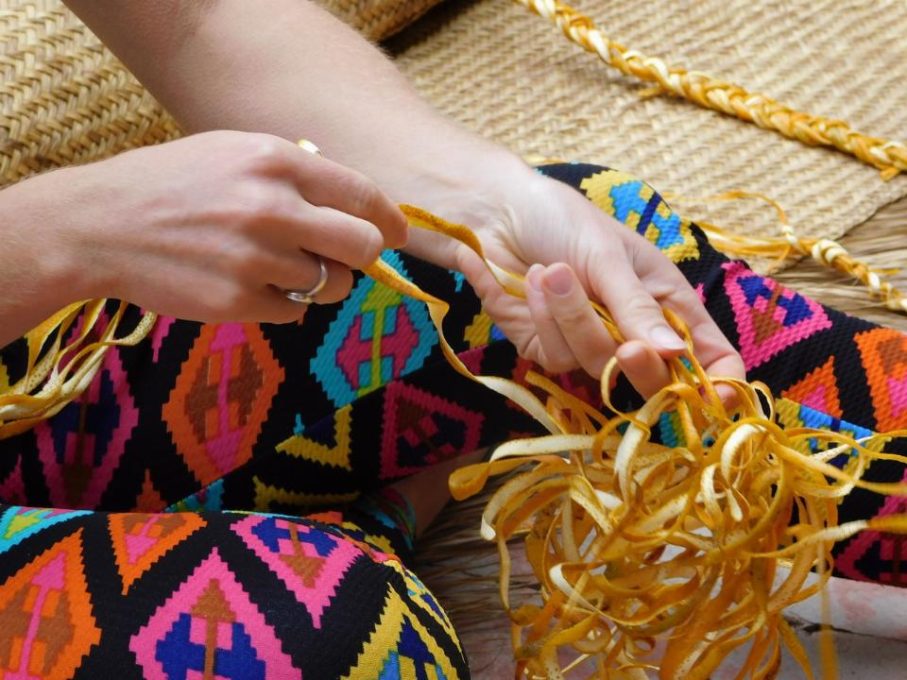Exiting the Centre
The Exiting the Centre exhibition focuses on the concept of the “centre” as a point of departure for considering reality. We all have our own centre we depart from and position the rest of the world against. This centre may be defined in a variety of ways; from the vantage point of geography, our village, town, country or continent may become the centre. It may further be interpreted in political, economic, cultural, and religious terms. Artists exploring distant countries we tend to refer to as exotic have been invited to join the exhibition. One of the vital points of the presentation involves a shift in all boundaries of thinking, as well as a capture of certain mental changes to human awareness.
From its early days, the exhibition was developed on the basis of individual stories and experiences of its participants. It is something of a process continuously created by artists. The exhibition title was born of a conversation I had with Grzegorz Drozd and Alicja Łukasiak in their studio in Warsaw. It was January; Alicja and Grzegorz had just returned from another trip. I began describing the exhibition’s main motives and assumptions to them. At a certain point, Drozd interrupted me and said: “I get it, it’s kind of like exiting the centre”.
Works by Daniel Rycharski and Wojciech Gilewicz with their different take on the centre are a deviation from the exotic travel motive. Rycharski’s microcosm is located in the Mazovian village of Kurówko as a focus of the artist’s activities. His works frequently depict stereotype perceptions of rural areas by the city. Concurrently, they reverse the vector of urban versus rural area attractiveness. Gilewicz, on the other hand, overthrows the myth of America as a centre of all things – the “dream”, slightly obsolete, and yet quite typical for our part of Europe.
Key assumptions to the Exiting the Centre exhibition have been perfectly illustrated in Susan Sontag’s Trip to Hanoi, a 1968 short piece she wrote in the wake of several weeks she spent in North Vietnam, an excerpt from which I quote below:
“As Hegel said, the problem of history is the problem of consciousness. The interior journey I made during my recent stay in Hanoi made the truth of this grandiose maxim sharp and concrete for me. There, in North Vietnam, what was ostensibly a somewhat passive experience of historical education became, as I think now it had to, an active confrontation with the limits of my own thinking.
The Vietnam that, before my trip to Hanoi, I supposed myself imaginatively connected with, proved when I was there to have lacked reality. During these last years, Vietnam has been stationed inside my consciousness as a quintessential image of the suffering and heroism of ‘the weak.’ But it was really America ‘the strong’ that obsessed me—the contours of American power, of American cruelty, of American self-righteousness. In order eventually to encounter what was there in Vietnam, I had to forget about America; even more ambitiously, to push against the boundaries of the overall Western sensibility from which my American one derives. But I always knew I hadn’t made more than a brief, amateurish foray into the Vietnamese reality. And anything really serious I’d gotten from my trip would return me to my starting point: the dilemmas of being an American, an unaffiliated radical American, an American writer.
For in the end, of course, an American has no way of incorporating Vietnam into his consciousness. It can glow in the remote distance like a navigator’s star, it can be the seat of geological tremors that make the political ground shake under our own feet. […]
Increasing numbers of people do realize that we must have a more generous, more humane way of being with each other; and great, probably convulsive, social changes are needed to create these psychic changes. […] An equally relevant weapon is the analysis of psychic geography and history: for instance, getting more perspective on the human type that gradually became ascendant in the West from the time of the Reformation to the industrial revolution to modern post-industrial society. Almost everyone would agree that this isn’t the only way human beings could have evolved, but very few people in Europe and America really, organically believe that there is any other way for a person to be or can imagine what they might be like.”*
*S. Sontag, Trip to Hanoi, in: idem, Styles of Radical Will, New York 1969, pp. 205–274, http://viet-studies.net/kinhte/TripToHanoi_Sontag.htm (accessed 13 November 2018).
Karolina Breguła, Grzegorz Drozd, Magdalena Firląg, Wojciech Gilewicz, Justyna Górowska, Adam Gruba, Alicja Łukasiak, Daniel Rycharski, ZOR (Zmiana Organizacji Ruchu)

PLAN YOUR VISIT
Opening times:
Thuesday – Sunday
10:00-18:00
Last admission
to exhibition is at:
17.30

